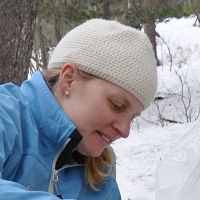CRB-CZO Seminar
CRB-CZO Seminar: Cities & Suburbia: How People Influence Nitrogen and Carbon Cycling
Stroud Water Research Center 970 Spencer Road Avondale, PA
-
Boulder, INVESTIGATOR
The percent of the population dwelling in urban and suburban areas in the US has increased over the last 200 years, from 10% to close to 80%, a trend that parallels the rest of the world. Given that the majority of humans live in these environments, urban ecosystems have a greater impact on regional and global systems as compared to a similarly sized undisturbed ecosystem. Watersheds effectively integrate physical, biological, chemical and anthropogenic processes; thus the geochemistry of rivers provides a signal of landscape function and health. Thus, by sampling watersheds across a gradient of urbanization the relative importance of human inputs and microbial processing (e.g. removal and transformations) on nitrogen and carbon exports from different landscapes can be determined.
Work done in the Connecticut River watershed utilizing mass balance and numerical models along with stable isotope techniques examines the sources and processing of nitrogen and carbon in urban, suburban and forested streams. The dual isotopic composition of nitrate (δ15N-NO3- and δ18O-NO3-) revealed that while the nitrate (NO3-) exported by streams draining developed watersheds reflected the sources of nitrogen to the system, the small amount of nitrate exported by forested watersheds was derived from internal processes indicating that the system was retaining, removing or reprocessing the vast majority of NO3- delivered to them via atmospheric deposition. Furthermore, while anthropogenic fluxes dominated the altered system signal as indicated by the significant correlation between NO3- concentrations and δ15N-NO3- due to the enriched 15N nature of sources such as septic in urban watersheds; the temporal variation in the isotopic composition of NO3- revealed that biotic processes significantly altered the amount exported throughout the year. Modeling results suggest that significant reprocessing and removal of NO3- (up to 65%) occurred within the developed watersheds. Anthropogenic changes to the land cover not only affect nitrate yields, they also significantly alter the rate of dissolved inorganic carbon (DIC) export. DIC yields were significantly correlated with the amount of urbanization within a watershed and results indicated that urbanized watersheds export 6-8 times more DIC than undeveloped systems. Greater yields were attributed to enhanced weathering and CO2 production within developed systems associated with urban green spaces and organic matter loading. These results suggest that urban areas are not only sources of CO2 via fossil fuel combustion; they are also a source of CO2 to the atmosphere and ocean via gas diffusion and export from streams, respectively.
Explore Further


